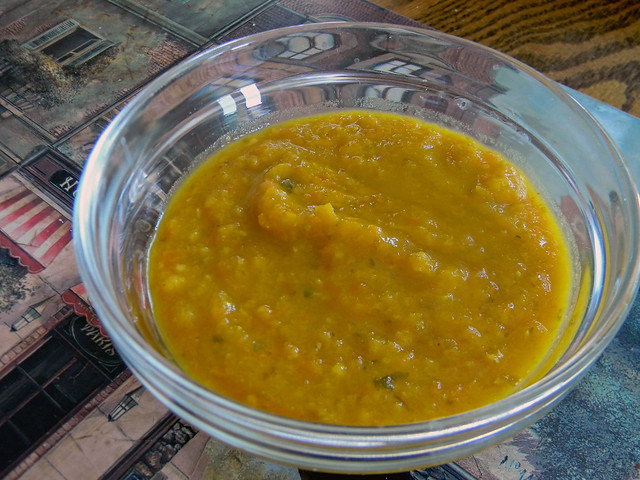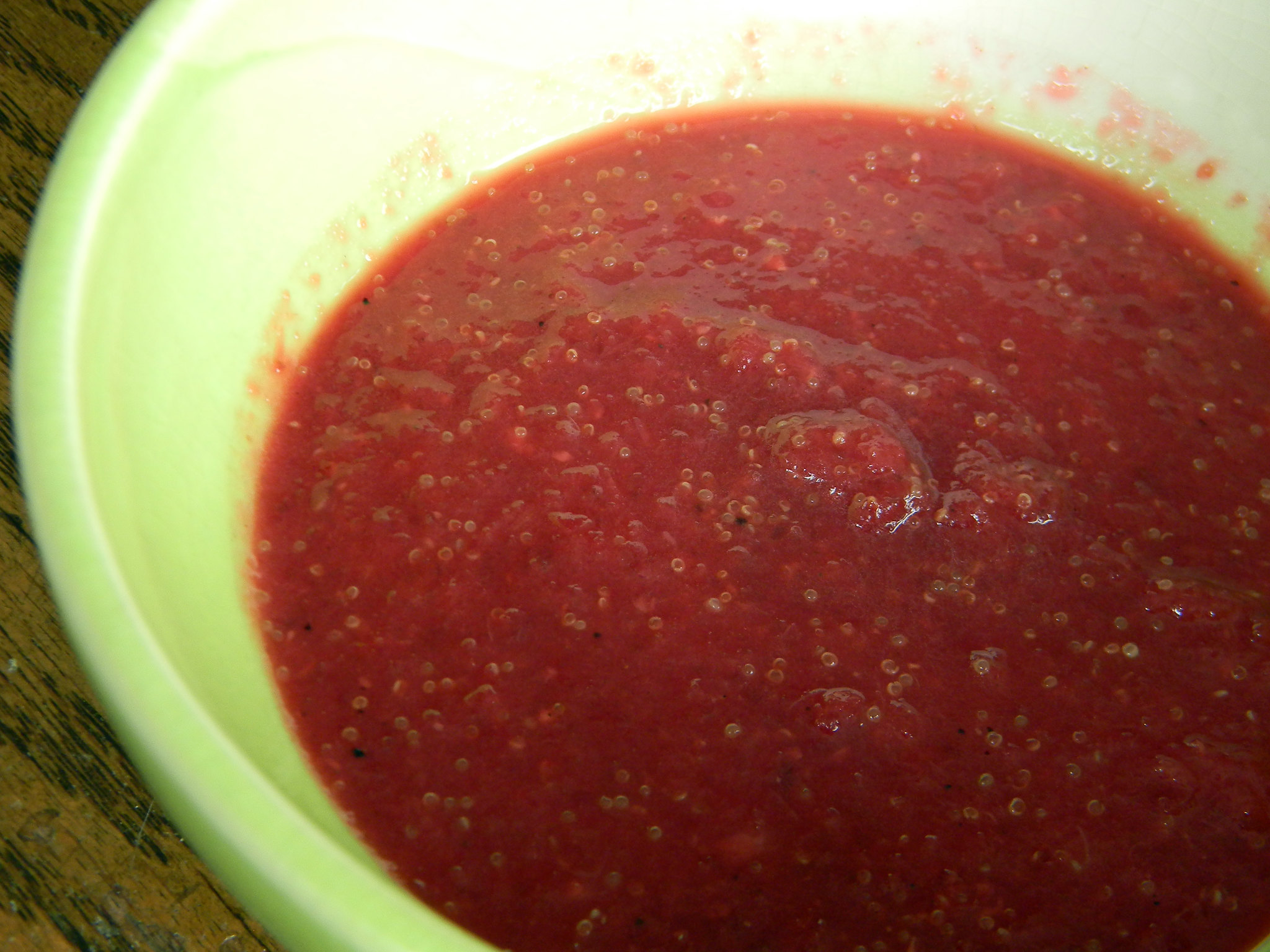Author:
Camilla V. Saulsbury
Publisher:
Robert Rose (2015)
Muffins. Cookies. Waffles. Burgers. All fundamental
parts of day to day Western eating, and all packed chock full of the latest
nutritional “baddie” – gluten. While the protein, found in wheat, barley, spelt, rye, Kamut and
triticale, is no danger to most people, for the 1% of the worldwide population
living with celiac disease that pesky little molecule becomes a big, life-altering
problem. Thankfully, the increased (if misguided) popularity of gluten free
diets has opened up a whole world of whole grain flavour and nutrition, and
companies like Bob’s Red Mill are doing their part to bring naturally
gluten-free grains and pseudograins safely to the table. Their latest endeavour
is a cookbook full of healthy, hearty fare, all written by Camilla V. Saulsbury
of the blog Power Hungry: Bob's Red
Mill Everyday Gluten-Free Cookbook: 281 Delicious Whole-Grain Recipes.
Everyday
Gluten-Free focuses on giving readers
the opportunity to enjoy great-tasting, satisfying and nutritious meals and
snacks without relying on overprocessed stand-ins for bread and pasta. Noodles,
in fact, are completely absent from the pages of Everyday Gluten-Free,
and with the exception of two burgers, store-bought bread products are eschewed
as well. Saulsbury relies instead on the array of gluten-free whole grains and
whole grain flours Bob’s Red Mill offers to create treats like Olive Oil Cake with Cherries and Dark Chocolate
Chunks (p. 304), Mushroom Quiche with
Teff Crust (p. 202) and even French
Crepes (p. 56). Most of these, especially the ones involving baked goods or
batters, use Bob’s Red Mill’s signature packaged “all purpose flour” blend – however, a quick
websearch will point you to any number of satisfactory flour combinations you
can make at home and keep in stock (personally, I recommend these
two).
Something I particularly
like about Everyday Gluten-Free is that the recipes are not only
celiac-friendly but generally nutritious as well. While I wouldn’t suggest
cooking a brand new recipe from the book in the middle of a hectic weeknight – learning
some of the more unusual ingredients, methods and spices is a task more
suitable for a lazy weekend – once you find a few favourites dinner can be just as fast as “regular”
meals. An extra bonus is that the book’s recipes tend to contain more fibre and
whole foods than the Standard American Diet, so you can have your meal and eat
it too! This book is not a vegetarian tome, but there is a sizeable chapter of Meatless Main Dishes (p. 179) is
included and many other chapters feature a majority of vegetarian items as
well. I even had success with converting a few baking recipes in Everyday
Gluten-Free to vegan or eggless goodies, making the goods safe for the
other food allergies in my taste-tester group.
Like most other
books published by Robert Rose, Everyday Gluten-Free has limited photography.
The photos that are present in the book are curated into four “blocks”, which
are worth a perusal on their own. While not every recipe is photographed, Colin
Erricson manages to cram enough mouth-watering images into such a restricted
space that it tempts the reader into trying the others as well. After spotting
the Chorizo, Kale and Teff Soup (p. 118)
mug (bowl?) shot, I was inspired to cook up a few batches of soup myself.
 |
| Split Pea Soup with Chia Chutney (p. 103) |
I was pleasantly
surprised by the flavour and texture of Saulsbury’s take on Split Pea Soup with Chia Chutney (p. 103)
– split pea soup is a favourite around here and the zippy elements of lime,
ginger and cilantro elevated it to another plane. Since transport and easy
enjoyment of these soups was the name of the game for us (who took Thermoses to
work), I swirled the elements of the Chia Chutney into the whole pot at the
end, adding an extra layer of oomph in every spoonful. I also used some
pre-roasted and frozen beets from last year’s garden to whip up the Amaranth Beet Soup (p. 83) with some flair of
my own – blood orange juice and shawarma spices. While these recipes were
delicious, what was strongly lacking in both was salt. Most of the recipes in Everyday
Gluten-Free lack this ingredient, which is a disservice to the flavour
potential the whole grains, legumes and produce offer. I’m not asking for heaps
of sodium chloride, but a hefty pinch of Kosher salt really turned the soups I made
from vegetable water into a hearty, flavourful meal. The other issue I found
with the savoury dishes, at least, was with the stated yields – the soup
recipes created 10-12 respectable main course servings, rather than the 6
Saulsbury documents. Luckily, we are a family who enjoys leftovers, but if your
household is more into one-shot cooking, keep the scaling of recipes in mind!
 |
| Amaranth Beet Soup (my version)(p. 83) |
Everyday
Gluten-Free is somewhat more
than a run-of-the-mill cookbook, even a gluten free one. The introduction is a
hefty 32 page exploration of gluten-free grains, including their history,
flavour, cooking techniques and nutrition, as well as a section on fleshing out
the pantry with staple goods and even measuring ingredients properly. For those
who already follow a gluten-free diet due to celiac or gluten intolerance, this
read is mostly review. However, for those just jumping on the gluten free trend
or who simply want to cook with more
whole grains, it is a fabulous beginner’s resource. What I particularly liked
was that the author gave a few different methods of cooking the grains, and
included important ingredients for any
healthy pantry such as legumes, nuts and seeds.
There are so many
tempting treats in Bob's Red Mill Everyday
Gluten-Free Cookbook: 281 Delicious Whole-Grain Recipes that it is hard to pick a single favourite. Moreso,
this book is a fantastic point of inspiration and basic methodology for readers
to develop their own spins on old favourites. Who knows, the language of
delicious, nutritious whole foods may just become your (gluten free) bread and
butter!


1 comment:
Post a Comment